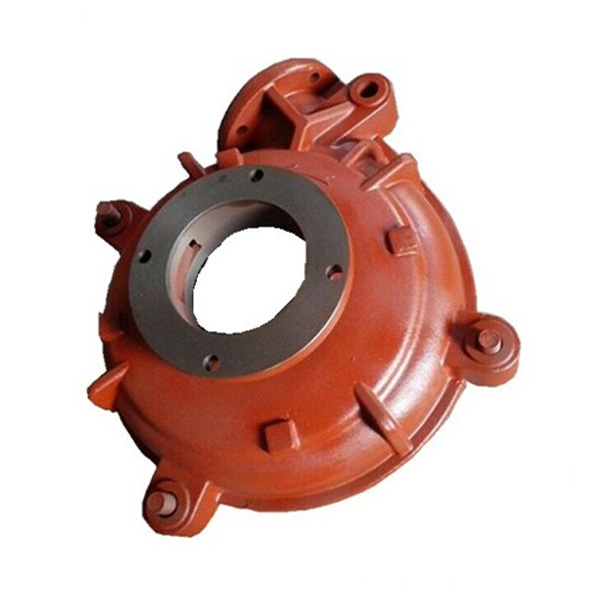Mobile:+86-311-808-126-83
Email:info@ydcastings.com
Car Cooling System Components Water Pump and Radiator Maintenance Tips
Understanding Car Radiators and Water Pumps The Heart of Engine Cooling
When it comes to the intricate workings of a car's engine, two components that play a vital role in maintaining optimal operating temperatures are the radiator and the water pump. Understanding how these parts work together can help car owners appreciate their importance and assist in proper vehicle maintenance.
The Radiator A Key Component
The radiator is essentially a heat exchanger that dissipates heat from the engine's coolant before it circulates back into the engine. Its primary function is to keep the engine from overheating, which can lead to severe damage and costly repairs. As the engine runs, it generates a substantial amount of heat due to combustion and friction. This heat must be removed efficiently to ensure the engine operates within the designed temperature range.
Radiators typically contain a series of thin tubes and fins that increase the surface area for heat exchange. Coolant from the engine flows through these tubes, and air passing over the radiator fins helps carry away heat. Most modern vehicles use a liquid cooling system, involving a glycol-based coolant mixed with water, which has excellent thermal properties.
The Water Pump The Lifeline of the Cooling System
Complementing the radiator's function is the water pump, which is responsible for circulating the coolant throughout the engine and the radiator. It ensures that the coolant flows consistently and efficiently through the engine block and heads, absorbing heat before circulating back to the radiator for cooling.
Most water pumps are belt-driven, relying on the engine's crankshaft to turn a pulley. As the pulley spins, it drives a rotor inside the pump, creating a vacuum that draws coolant from the radiator into the engine. Once the coolant absorbs heat, it is pushed back to the radiator, where it cools down before returning to the engine in a continuous cycle.
The Interplay Between Radiator and Water Pump
car radiator water pump

The relationship between the radiator and water pump is crucial for the overall health of the engine. If the water pump fails, the flow of coolant will be disrupted, which can lead to overheating. Conversely, if the radiator is clogged or damaged, the coolant cannot effectively dissipate heat, resulting in the same problem.
Regular maintenance and checks on both systems are vital to ensure they function optimally. Signs of potential issues may include overheating, fluctuating temperature gauges, or coolant leaks. If a driver notices any of these symptoms, it’s essential to have the vehicle inspected promptly.
Maintenance Tips
1. Coolant Flush Over time, coolant can degrade and become less effective. Regularly flushing the cooling system and replacing coolant can prevent buildup and corrosion, which can impede the performance of the water pump and radiator.
2. Inspect for Leaks Regularly check for any visible leaks around the radiator, hoses, and the water pump. A leaking water pump is often indicated by a puddle of coolant under the vehicle or a whirring noise, which can indicate bearing wear.
3. Check Belts and Hoses The belts that drive the water pump and the hoses that carry coolant should be routinely inspected for wear and tear. Cracks, frays, or bulging can lead to failure, which could leave the engine without adequate cooling.
4. Thermostat Functionality The thermostat regulates coolant flow based on engine temperature. If it fails, it can either block coolant flow, leading to overheating, or allow coolant to flow continuously, resulting in inefficient engine operation.
5. Radiator Cleaning External debris can block airflow through the radiator. Cleaning bugs, dirt, and other debris regularly helps ensure that the radiator can effectively dissipate heat.
In conclusion, the car radiator and water pump are essential components in maintaining an engine's optimal performance. Regular attention and proactive maintenance can help prevent overheating and extend the life of both the engine and these critical cooling system components. Understanding their functions not only enhances a car owner's knowledge but also fosters responsible vehicle ownership.
-
Why Should You Invest in Superior Pump Castings for Your Equipment?NewsJun.09,2025
-
Unlock Performance Potential with Stainless Impellers and Aluminum End CapsNewsJun.09,2025
-
Revolutionize Your Machinery with Superior Cast Iron and Aluminum ComponentsNewsJun.09,2025
-
Revolutionize Fluid Dynamics with Premium Pump ComponentsNewsJun.09,2025
-
Optimizing Industrial Systems with Essential Valve ComponentsNewsJun.09,2025
-
Elevate Grid Efficiency with High-Precision Power CastingsNewsJun.09,2025











